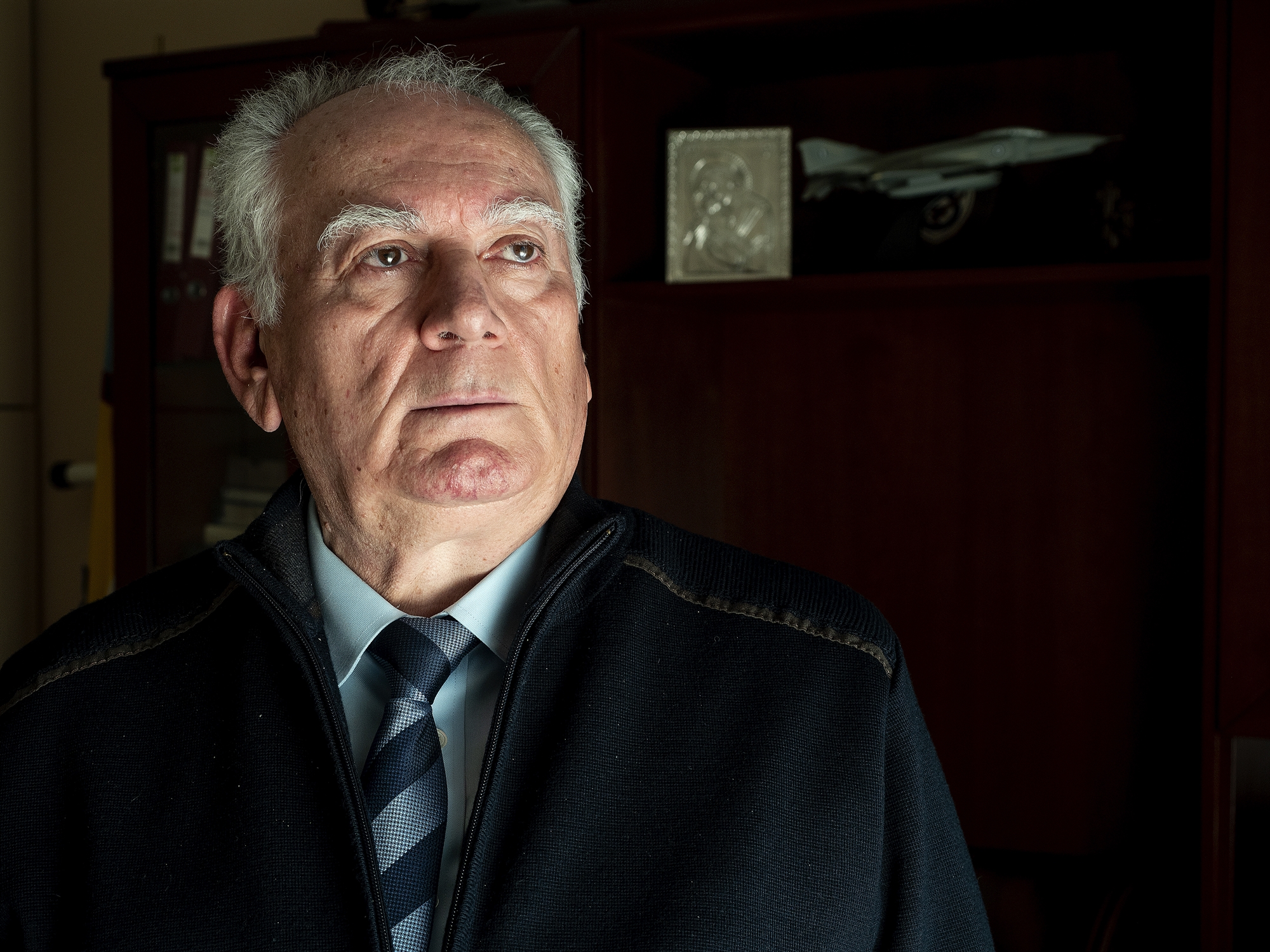
“Knot in the stomach.” Anastasios Katsibras, upon hearing the news of the downing of an Air Force F-4 Phantom and the deaths of two pilots, said he felt as if he had lost two members of his family. Many years ago, he flew the same fighter, and as an instructor he escaped in the early 90s, when the same type of aircraft caught fire in the air and had to be abandoned. “These kids started out with the same dreams as us,” he says. “When you get on this plane, you forget everything else. Both man and machine are at the limit of their capabilities.
68-year-old vice-captain (I) e.a. Anastasios Katsimbras spent most of his career as a fighter pilot with the 117th Fighter Wing at Andravida. In his home office, next to Phantom models, old photographs and other memorabilia, he also keeps the left handbrake that saved his leg before he jumped overboard. So far, little can be said about the circumstances of the recent accident and death of 31-year-old squad leader Efstathios Tsitlakides and 29-year-old sub-squadron Marios-Mikhail Turoutsikas. The incident is so fresh, it is expected that the investigation will take some time, any speculation about what happened would be risky. “The task of the investigative committee is very difficult. There is not much debris, it would have been different if the plane had crashed to the ground,” says Mr Katsibras.

It was in September 1991 when he had an accident while flying the Phantom. He sat in the back seat, but he had the role of an instructor and the whole burden of decisions at a critical moment fell on him. An explosion in the combustion chamber reportedly pierced the fuel tanks of the fuselage. “It just came out of the fuel, flowed backwards and burned,” he says. “It is not an easy decision to refuse, you need to make sure that the plane is doomed, that there is no salvation. You will apply all the prescribed procedures, some specific actions that you do from memory without opening the checklist.
He was forced to leave the plane when it caught fire. Now God and the seat, thought Anastasios Katsibras as he was tossed into the air.
He turned off the left engine, but the fire could not be contained. He also turned off the right engine, but to no avail. “I thought if the fire went out with the right engine, I would restart the left engine to go in for landing, the choker got tangled in his hair,” he says. The fire continued, they had no choice. Mr. Katsibras and the trainee skipper took up their places for disembarkation, grabbed the handle and heard the roar of the catapult. He briefly remembers being knocked unconscious by the ejection. He woke up seconds later when he fell into space. Now God and the place, he thought.
The parachutes deployed and fell into the sea about 40 miles west of the recent accident. They were gone for about three hours, fighting the waves. He recalls that in a “wise decision” the wing commander called for more Phantoms to take off, flew over them and spotted them. Back on the air in two weeks. “I had 20 trainees, I was an operations officer. I wouldn’t keep flying? There was no way,” he says.
The first Phantom aircraft was ordered by the Air Force in 1972 and landed at the 117th Fighter Wing at Andravida on 5 April 1974. Other deliveries followed, and in 1990 Greece received 28 F-4Es from the US. At the end of the 90s, the aircraft were structurally strengthened, and their electronics were also modernized. “This is a powerful military platform,” says Mr. Katsibras. “This is a two-seat aircraft with two engines, and in the air it is very important to have a co-pilot with whom you can cooperate. It’s a tough fighter that has fought in Vietnam, the Middle East, the Gulf War, and has flown in more than 52 countries. He has a dual role, interception and bombing, but now it is not practical to engage in close air combat, the F-16 is more flexible.
Vice Captain (I)ea Anastasios Katsimbras made his last flight on 15 June 2007 at Andravida. He later served as Commander of the Air Command of the Cyprus National Guard and retired in 2011.
He explains that the requirements for work remain the same, no matter how many years pass, no matter how many generations change at the console, no matter how many upgrades are made to the systems. “In air combat, the weight increases rapidly from G, the cheeks drop, the hand cannot be raised under any government, so the manufacturer made sure that everything was in the handle and levers,” he says. That is why upbringing and training are constant, the pilots, according to him, must be “champions”, avoiding abuse. “There are certain limits, a six-month training program that includes how many shots, how many interceptions, how many shootings and attacks on naval targets you complete in this time,” he adds.
In the past, he also mourned his friends in other accidents. What keeps people like him in the fighters despite the dangers? “These are people who love the country and the air,” he says.
Source: Kathimerini
Ashley Bailey is a talented author and journalist known for her writing on trending topics. Currently working at 247 news reel, she brings readers fresh perspectives on current issues. With her well-researched and thought-provoking articles, she captures the zeitgeist and stays ahead of the latest trends. Ashley’s writing is a must-read for anyone interested in staying up-to-date with the latest developments.